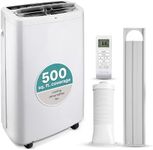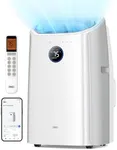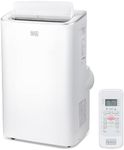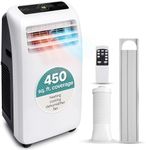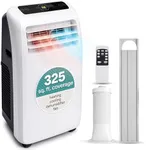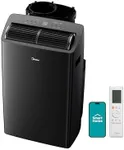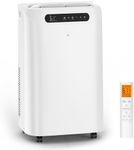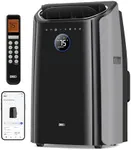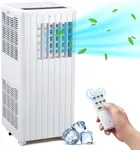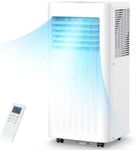Buying Guide for the Best Portable Ac Units
Choosing the right portable air conditioning unit can make a big difference in keeping your space comfortable during hot days. When picking a portable AC, it's important to match its capabilities to the size of your room and your specific needs such as ease of movement, level of noise, and energy use. Carefully considering what you expect from your portable AC—like if you need it for a small bedroom or a large living room—can help you focus on the features that matter most.Cooling Capacity (BTU)BTU stands for British Thermal Units and is a measure of how much heat an air conditioner can remove from a room per hour. This is essential for ensuring your AC can actually cool your space effectively. Portable ACs usually range from about 8,000 to 14,000 BTU, with lower numbers suitable for small bedrooms (up to 250 sq ft), mid-range for average living rooms (250-450 sq ft), and higher BTUs for larger areas (over 450 sq ft). To choose, match the BTU rating to the square footage of your room; too low and it won't cool well, too high and it may not remove humidity efficiently.
Noise Level (dB)The noise level, measured in decibels (dB), tells you how loud the unit will be during operation. This is important if you plan to use it in a bedroom or quiet area. Most portable ACs range from about 50 to 60 dB. Quieter units (near 50 dB or less) are suitable for bedrooms and offices, while higher noise levels might be acceptable in living rooms or kitchens. Consider your sensitivity to noise and where the unit will be used to determine the best range for you.
Portability and SizePortability refers to how easy it is to move the unit from one room to another, often determined by its weight, handle design, and whether it has durable wheels. If you plan to move the AC between rooms, look for lighter units with smooth-rolling casters. If it will mostly stay in one place, size and weight may matter less. Consider the path the unit must travel—such as stairs or narrow spaces—when deciding how portable your ideal unit should be.
Dehumidification FeatureMany portable AC units also function as dehumidifiers, removing excess moisture from the air. This is especially important in humid climates or for those who want to prevent mold and dampness. Units list their dehumidification in pints per day; higher values mean more moisture can be removed quickly. If you live in a humid area or want to use the unit to reduce dampness, prioritize a stronger dehumidifying value. For dry climates this feature may be less important.
Drainage OptionsPortable ACs collect water as they cool and dehumidify; this water must go somewhere. There are self-evaporating, manual drain (collection tank), and continuous drain (hose) systems. Self-evaporating is most convenient for frequent use as it minimizes maintenance, while manual tanks require regular emptying, and hose connection is best for long-term stationary use. Your desired level of convenience and the space you have for drainage will help determine the best fit.
Filter Type and MaintenanceThe unit's air filter helps remove dust and airborne particles, improving air quality. Some units have standard mesh filters, while others have washable or more advanced filters like activated carbon for odors. Easier-to-remove designs make cleaning simple, which is important for maintaining cooling efficiency. If you have allergies or pets, or want low-maintenance operation, choose a unit with advanced or easily washable filters.
Control FeaturesMany portable ACs offer different control options like remote controls, digital displays, programmable timers, and sometimes even smart controls for use with apps or voice assistants. More advanced controls add convenience, especially for adjusting settings without getting up or for scheduling operation in advance. Decide how much convenience or smart integration you want based on how you plan to use the unit.
Ventilation RequirementsAll portable ACs need to vent hot air, usually through a window via an included hose. Check the type and compatibility of the window kit, as some units fit only certain window sizes or types. If your room has unusual windows or no windows at all, you may need a model with a flexible or alternative venting system. Consider your window and room setup before choosing.
